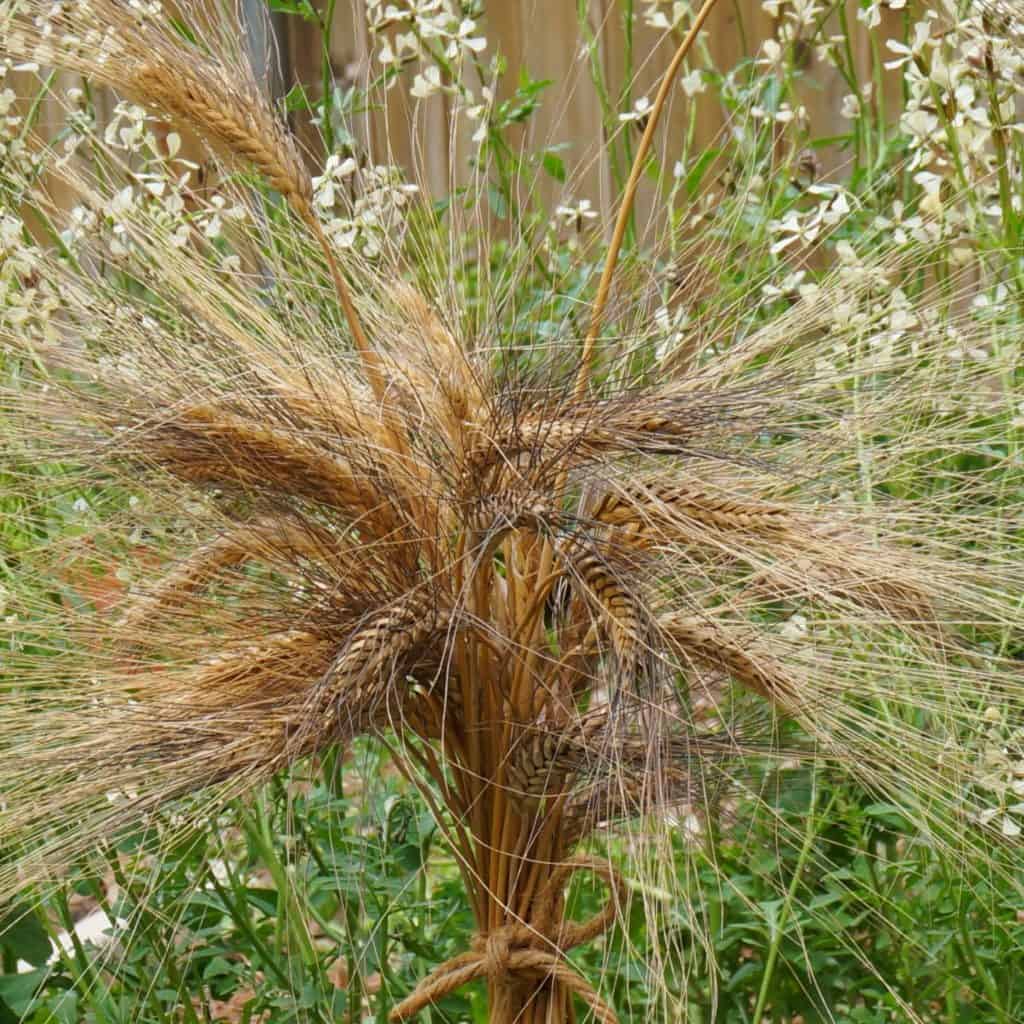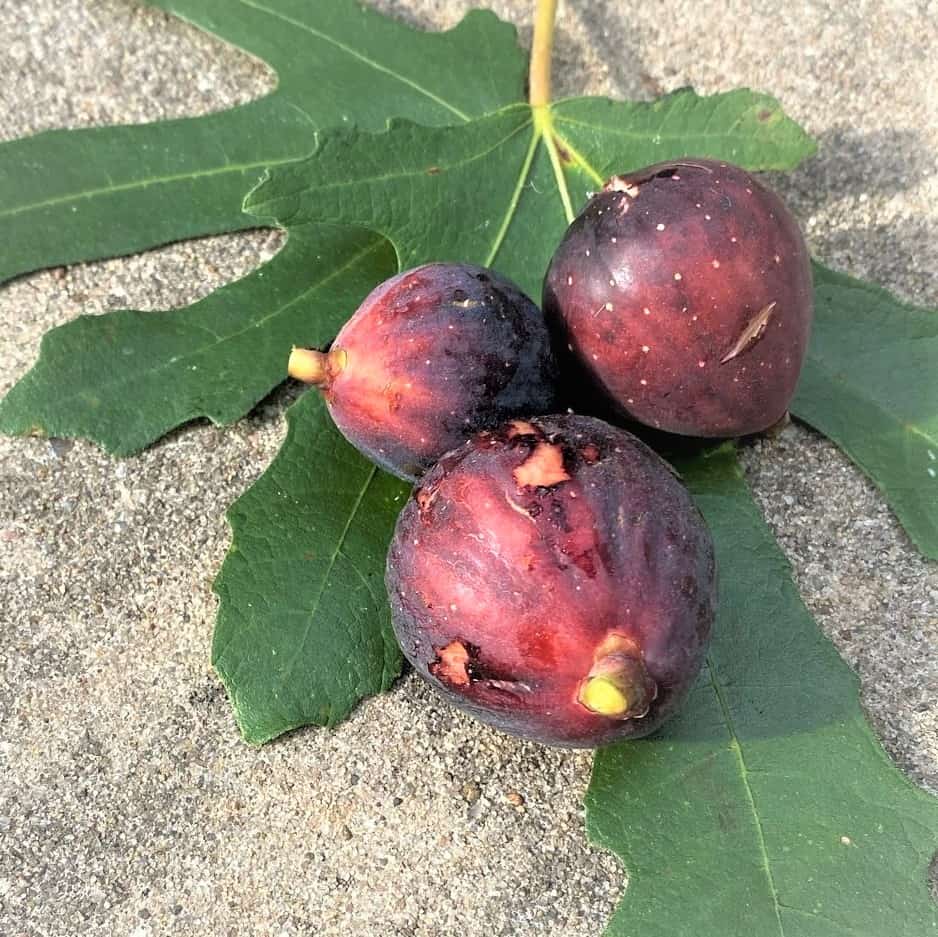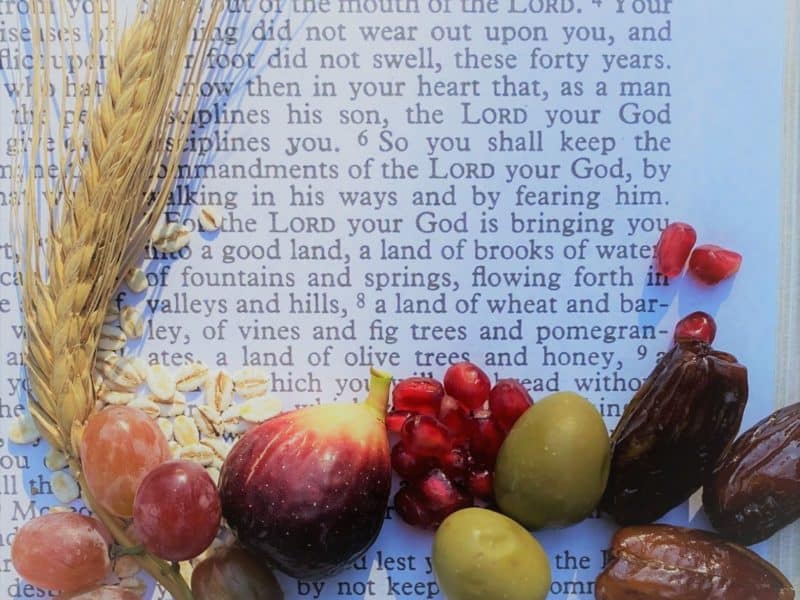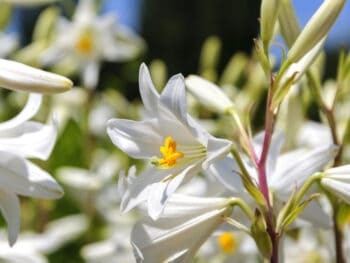Autumn is always a good time to reflect on God’s bounty and provision, with end-of-summer harvesting and processing at its peak. In the Bible, the Lord alluded to his people that their fall livelihoods would have a flourish of abundance and activity by the list He gave them of the plants they would be cultivating. This vivid, inviting description of the land God had prepared for the descendants of Abraham, Isaac, and Jacob has come to be known as The Seven Species. It listed specific grains and fruits still laden on tables today during the fall throughout the world.
It’s a land of wheat and barley, of vines and fig trees and pomegranates, a land of oil-rich olive trees and date honey. In that land, you’ll always have plenty to eat—you won’t lack anything! Deuteronomy 8:8-9 VOICE
This list’s promise was more encouraging than we might realize. These were foods common to ancient Middle Eastern diets; however, instead of this interesting, fruity assortment, Abraham’s descendants, the Israelites, had eaten manna for forty years! Not to complain, O Lord (no whining! see Numbers 11), but “what is it??!”
God had just dramatically delivered them from lives of bitter slave-labor in Egypt, and they were perfectly positioned to trust Him in anything He promised to provide. Yet it must have been deliciously hopeful to imagine their future would include real grains for making real bread, along with sweet fruits for gooey spreads, since their daily diet had been drastically simple. The Seven Species were God’s poetic appeal to hold out for the abundant life ahead with Him.
Getting to Know The Seven Species
Getting to know The Seven Species is like accepting an invitation to meet with the Lord.
Jesus said unto them, Come and dine. John 21:12 JUB
These plants are visceral connection points; quite literally, in eating from this list, the Word will become our flesh! Be curious and inquiring and pursue a new taste or garden plant…and discover more of God’s goodness. “Taste and see that the Lord is good,” sang the psalmist (Psalm 34:8). The Seven Species plant list can lead us today in the way of trusting Him.
Find a few key points to guide your garden to table understanding in the following overview, with links to more information when you are ready for a deeper dig.
#1 Wheat

Wheat is a beloved grain, giving rise to all kinds of tasty baked goods from its flour—bread to pasta to cakes and pastries. Ferro and bulger are prepared similar to rice, cooking the wheat kernels whole. Though usually grown on an agricultural scale, wheat seeds can be sown each year in the garden for ornamental enjoyment. Let stalks blow in early spring breezes to capture movement in the garden, then cut and dry them for harvest decorations in the fall. Wheat requires particular processing steps to yield the “finest” flour, such as threshing and winnowing, separating the wheat from the chaff, or the hard, papery sheath encasing the seed—all incorporated as metaphors in God’s Word for waiting and trusting in God’s ways.

He is the one who brings peace to your borders and satisfies your hunger with the finest wheat. Psalm 147:14 NOG
“Simon, Simon, Satan has asked to sift all of you as wheat. But I have prayed for you, Simon, that your faith may not fail. And when you have turned back, strengthen your brothers.” Luke 22:31-32 NIV
Learn more about growing wheat in your garden in the Plant Guide: www.gardenindelight.com/plant-guide/wheat/
Dig in: The Wheat Prayers reveals insight in two key Biblical passages mentioning wheat
#2 Barley

Barley will bless your garden in delightful ways, and now is the time to sow this hardy crop if you live in a mild-winter climate. It is the more rustic and humbler of these two ancient grains, with an earthy taste and heavier, dense quality to baked goods. As a whole grain, it is mostly served in hearty soups and side dishes, a working-class meal; yet as a garden plant, please enjoy its vivid green stalks that stand lovely and as lively as any ornamental grass through the early spring. Economical, too! A full handful of barley seed will fill a garden bed as well or better than several one-gallon ornamental grasses at a penny-price, growing carefree.
“She asked ‘Please allow me to glean and gather among the barley sheaves behind the harvesters.’ So she came and has been working in the field since morning until now, except for a little while in the shelter.” Ruth 2:7 TLV
“Here is a boy with five small barley loaves and two small fish, but how far will they go among so many?” John 6:9 NIV
Learn more about growing barley in your garden in the Plant Guide: www.gardenindelight.com/plant-guide/barley/
Dig in: Growing Barley’s Mystery will draw you to some of the most intricate revelations of the Lord Jesus.
#3 Grapevines

Grapevines are generally grown in fields dedicated to their cultivation, yards and yards of vineyards stretched long with precisely tied-up, branching stalks. Varieties for winemaking have smaller, pea-sized fruits, while table grapes are olive-sized, growing in larger clusters. Several hybrids are available for the gardener to include in garden design, perhaps twining up arbor posts or trained up along a back fence. Add these edible vines wherever you have plenty of sunshine; vines are remarkably drought-tolerant. Growing grapevines takes gardening to a whole other level—for vines need constant tending and devoted care…lots of pruning, that is! So far, my best harvest from garden grapevines is homemade grapevine wreaths!

Jesus said to his disciples: I am the true vine, and My Father is the gardener…I am the vine, and you are the branches. If you stay joined to me, and I stay joined to you, then you will produce lots of fruit. But you cannot do anything without me. John 15:1, 5 CEV
For six years sow your fields, and for six years prune your vineyards and gather their crops. Leviticus 25:3 NIV
Learn more about growing grapevines in your garden in the Plant Guide: www.gardenindelight.com/plant-guide/grapevine/
Dig in: A Grapevine Toast takes you to a vineyard with a special garden in California’s wine country.
#4 Fig Trees

Fig trees are a must for any home garden, for the unique fruits are best ripened on the tree. Therefore, you will only truly enjoy this fruit if you grow your own, watching until they are fully ready, softened and sweet, and picking by hand. The curious tree will fill out rapidly with asymmetrical branches and wild, curvy forms to shape an overall mounded habit. Leaves are plenty big, though they wither quickly once cut away; the make-shift coverings would not have worked out well long-term for Adam and Eve. Thank goodness the Lord provided better! Dwarf hybrid varieties are available, like ‘Little Miss Figgy,’ to grow in pots and overwinter in a garage or basement. Sweet with a spicy flavor flair, fig fruits will surely become your homegrown favorites. Taste and see why Jesus was hungry for figs!

Whoever tends a fig tree will eat its fruit, and he who guards his master will be honored. Proverbs 27:18 ESV
Then the eyes of both of them were opened, and they realized they were naked; so they sewed fig leaves together and made coverings for themselves. Genesis 3:7 NIV
Learn more about growing fig trees in your garden in the Plant Guide: www.gardenindelight.com/plant-guide/fig/
Dig in: Under Your Own Vine and Fig Tree reveals the metaphors of these plants as signs of God’s peace among neighbors in the land.
#5 Pomegranates

Pomegranates grow on perky, happy trees in any zone 8 or warmer garden, and cold climate gardeners can enjoy the bold, red fruit-beauties filling grocery stores through the holidays. Unlike pop-in-your-mouth figs, pomegranates have a thick rind that must be cut open to reveal their brilliant multitude of edible seeds. Put in the work to pry out the seeds and you will not be disappointed! They are tart and refreshing, adding a beautiful color-flavor blast to salads, side dishes, and desserts. Multi-trunked trees flower in spring with the same cheery display, punctuating the end of fountain-like branches with showy blooms, which become the fruits. Their bell shape captured the heart of the Lord, as He specified their decoration in preparing priests’ clothing.

You are an orchard that puts forth pomegranates and other precious fruits, henna and nard — Song of Songs 4:13 CJB
The bells and pomegranates alternated around the hem of the robe to be worn for ministering, as the Lord commanded Moses. Exodus 39:26 NIV
Learn more about growing pomegranate trees in your garden in the Plant Guide: www.gardenindelight.com/plant-guide/pomegranate/
Dig in: Too Busy to Peel a Pomegranate showcases the fruit in slowing down from life’s hectic pace, especially at holiday time.
#6 Olive Trees

O olive trees, the steadfast light-bearer of Scripture! Oil pressed from olive fruits was the greatest source of lamp oil in the ancient world, all the while blessing households with a heart-healthy oil for cooking and baking. Yielding olive oil is not the reason to grow an olive tree in your garden today, yet its beauty and stature alone will be a special delight to behold in the landscape. Most of us will keep them potted, as olive trees need shelter from prolonged temperatures below 35 degrees. Place in front of a sunny window to enjoy this anointed evergreen indoors from Christmas to celebration of the Lord’s resurrection. Meanwhile, the fruits’ robust flavor is captured by commercial growers and sold everywhere to enjoy, inspire the imagination, and connect us back to the land where Christ walked among the people.

This time the dove came back to him in the evening, and there, in its beak, was a freshly plucked olive leaf. So Noah knew then that the waters had begun to retreat from the land. Genesis 8:11 VOICE
As he was drawing near—already on the way down the Mount of Olives—the whole multitude of his disciples began to rejoice and praise God with a loud voice for all the mighty works that they had seen Luke 19:37 ESV
Learn more about growing olive trees in your garden or potted for indoor decoration in the Plant Guide: www.gardenindelight.com/plant-guide/olive/
Dig in: A Lenten Look at Trees: Olive connects many of olive tree’s appearances in Scripture to a continuous, multi-faceted message in God’s Word.
#7 (Date) Honey

The seventh species is not specifically named—an ironic way for God to end such an explicit list! “Deb-ash,” the Hebrew word named in the Scripture, describes the gooey, thick-liquid nature of honey. The term can refer to bee honey or to the spreadable, sticky paste made from dates or other fruits. Most scholars assign dates from the date palm as the intended plant completing the Israelites’ good bounty. Date palms soar with funky, graceful fronds above slender, tall trunks, a distinctive form from other trees. Growing date palms will likely be left to desert gardeners of the southwest, although many specimens are found in tropical greenhouses of our nation’s northern botanic gardens. The trees like sunny, hot, above-freezing constancy, and a secret source of water. No worries, dried date fruits fill supermarkets and keep well in the cupboard. Make your own date honey by pulverizing the fruits in a food processor to sweeten your cooking without table sugar. A date palm in the landscape was a welcome sign of refreshment, easily noticed by travelers from great distances. May your hospitality around the table be equally welcoming and fruitful.

Then they came to Elim, where there were twelve springs of water and seventy palm trees. So they camped there by the waters. Exodus 15:27 TLV
The righteous will flourish like a palm tree, they will grow like a cedar of Lebanon; planted in the house of the Lord, they will flourish in the courts of our God. Psalm 92:12-13 NIV
Learn more about enjoying dates from garden to table in the Plant Guide: www.gardenindelight.com/plant-guide/date-palm/
Dig in: Date Palm Delights plays on this desert tree that sweetens desserts with a recipe for date honey.
Garden to Table Goodness
As usual, God’s Word beckons us from a single-sentence plant list to much more! He satisfies curiosity with a never-ending wander of discovery and connection. Don’t tell the Israelites that the journey never ends! Come back to this post when you have more time to explore the links to more articles, information, and Scriptural understanding. Digging into the horticulture, hospitality, and garden to table goodness of the Bible’s plants leads us in the abundant life with Him. See for yourself as these species begin to catch your eye from nursery to supermarket shelves and return your thoughts to His Word.
Prayer: O Lord, thank you for planting intrigue and wonder in your Word and in my relationship with You! Help me to turn every, “what is it?!?” moment—when something comes to me that I don’t expect, don’t understand, or don’t know about—to trusting You. You will show me that You are leading me somewhere good. Bless me to embrace your fruitfulness. The Israelites’ journey is my journey, and You are still the God who personally guides and provides. Please make sure I meet you along the way. In Jesus Name I pray, Amen.
“Is there still seed in the storehouse? Also the vine, the fig tree, the pomegranate and the olive tree—are they still bearing fruit? From this day on I am going to bless you.” Haggai 2:19 TLV
All the nations may walk in the name of their gods, but we will walk in the name of the Lord our God for ever and ever. Micah 4:5 NIV

Find more information on “The Seven Species,” in devotions on The Promised Land, “Lay of the Land,” in God’s Word for Gardeners Bible, from the Garden Tour section, beginning on page a-15

If you have a copy of God’s Word for Gardeners Bible, be sure to use the Plant Index available on this website to quickly locate The Seven Species in all the places these fruits an grains are frequently mentioned

Garden to Table information on all of The Seven Species is available in our Plant Guide
Photo Credits: ©Shelley S. Cramm
CEV notes Scripture quotations taken from the Contemporary English Version Copyright © 1991, 1992, 1995 by American Bible Society, Used by Permission.
CJB notes Scripture quotations taken from the Complete Jewish Bible by David H. Stern. Copyright © 1998. All rights reserved. Used by permission of Messianic Jewish Publishers, 6120 Day Long Lane, Clarksville, MD 21029. www.messianicjewish.net.
ESV denotes Scripture quotations taken from The ESV® Bible (The Holy Bible, English Standard Version®). ESV® Text Edition: 2016. Copyright © 2001 by Crossway, a publishing ministry of Good News Publishers. The ESV® text has been reproduced in cooperation with and by permission of Good News Publishers. Unauthorized reproduction of this publication is prohibited. All rights reserved.
JUB denotes Scripture quotations taken from The Holy Scriptures Jubilee Bible 2000 (From the Scriptures of the Reformation) Copyright © 2013, 2020. Translated and Edited by Russell M. Stendal.
NIV denotes Scripture quotations taken from the Holy Bible, New International Version®, NIV®. Copyright © 1973, 1978, 1984, 2011 by Biblica, Inc.® Used by permission of Zondervan. All rights reserved worldwide. www.zondervan.com The “NIV” and “New International Version” are trademarks registered in the United States Patent and Trademark Office by Biblica, Inc.®
NOG denotes Scripture quotations taken from The Names of God Bible copyright © 2011 by Baker Publishing Group, 6030 East Fulton Road, Ada, MI 49301. All Rights Reserved.
TLV denotes Scripture quotation taken from Tree of Life (TLV) Translation of the Bible. Copyright © 2015 by The Messianic Jewish Family Bible Society.
VOICE denotes Scripture quotations taken from The Voice™. Copyright © 2012 by Ecclesia Bible Society. Used by permission. All rights reserved.













